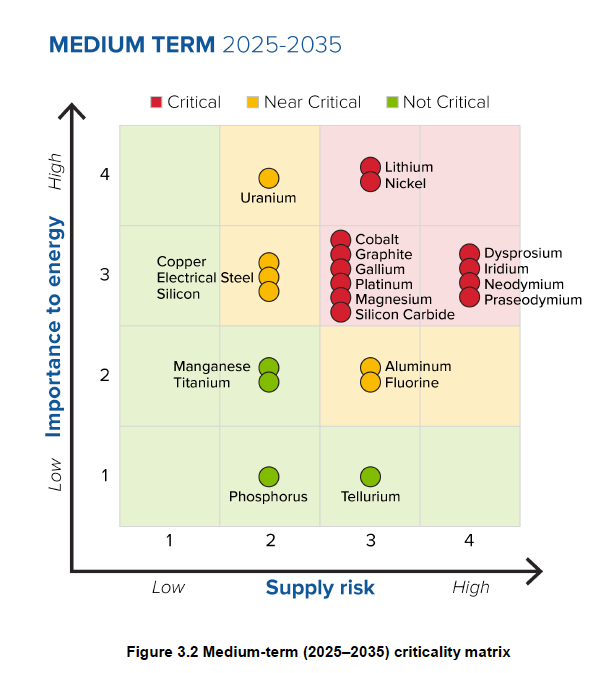Here's How Rare Earth Metals And Critical Minerals Stocks Differ From Each Other
Photo by MiningWatch Portugal on Unsplash
Introduction
There has been a lot of news recently about rare earth metals and critical metals and with that, there's a lot of confusion about just what the differences are between them and this article rectifies that.
What Are Critical Minerals?
- Critical minerals are minerals that are essential to the generation, transmission, and storage of clean energy. Demand for these materials from advanced technologies, urbanization/industrialization, and the energy transition may be set to outpace supply, creating a supply deficit.
- Critical minerals are a category defined by their strategic economic importance and potential supply risks. While all rare earth elements are considered critical minerals, not all critical minerals are rare earths. The key difference lies in their economic significance and the potential challenges in obtaining them. Geologically, these minerals are distinguished by their complexity in extraction. Rare earth elements often require intricate processing to separate individual elements, while critical minerals might be more straightforward to extract. The chemistry behind rare earth elements (REEs) is particularly complex, with their similar atomic structures making separation a sophisticated scientific challenge.
- The U.S. Department of Energy (DOE) officially added copper to its critical materials list in August 2023, marking the first time a U.S. government agency has included copper on one of its official “critical” lists, following the examples of the European Union, Japan, India, Canada, and China.
- Below is a list of 22 critical minerals (out of a total of 32) outlining the degree of supply risk of each.

A List Of Pure-play Critical Stocks
In my article New Pure-Play Critical Minerals Mining Stocks Portfolio I provide a list of 9 pure-play miners of critical minerals, other than rare earth metals, with their market caps, minerals mined, and their stock performances.
What Are Rare Earth Metals?
As described in Wikipedia:
- Rare-earth elements (REE), also called rare-earth metals, or rare earths, are a set of 17 nearly indistinguishable lustrous silvery-white soft heavy metals (see list here). The 15 lanthanides (or lanthanoids), along with scandium and yttrium, are usually included as rare earths (scandium and yttrium are considered rare-earth elements because they tend to occur in the same ore deposits as the lanthanides and exhibit similar chemical properties, but have different electrical and magnetic properties).
- Those with low atomic numbers are referred to as light rare-earth elements (LREE), those with high atomic numbers are the heavy rare-earth elements (HREE), and those that fall in between are typically referred to as the middle rare-earth elements (MREE). Commonly, rare-earth elements with atomic numbers 57 to 61 (lanthanum to promethium) are classified as light and those with atomic numbers 62 and greater are classified as heavy rare-earth elements. Large ore bodies of LREE are known around the world and are being exploited. Ore bodies for HREE are more rare, smaller, and less concentrated. Most of the current supply of HREE originates in the "ion-absorption clay" ores of Southern China.
- Rare-earth elements or minerals are distinct from minerals or materials described as critical minerals or raw materials, which refers to materials that are considered to be of strategic or economic importance to a country. Compounds containing rare-earths have diverse applications in electrical and electronic components, lasers, glass, magnetic materials, and industrial processes.
- The term "rare" in "rare-earth" is a misnomer because they are not actually scarce (they are relatively plentiful in the entire earth's crust - cerium, for example, is the 25th-most-abundant element which is more abundant than copper), but rather because they are only found in compounds, not as pure metals, or perhaps because they were considered exotic at the time of their discovery.
- The "earth" part refers to an old term for minerals that dissolve in acids and thus are stable to oxidation. They are never found in highly concentrated form, usually being mixed together with one another, or with radioactive elements such as uranium and thorium, and can only be separated from other materials or one another with difficulty so to obtain rare earths at usable purity requires processing enormous amounts of raw ore at great expense.
A List Of Pure-play Rare Earth Metals Stocks
In my article entitled All About Rare Earth Metals: Production, Reserves, Stocks, I identify the 10 countries that mined the most rare earths in 2024, the top eight countries in terms of rare earth element reserves, and a list of the biggest rare earths stocks by market cap on U.S., Canadian and Australian stock exchanges divided into those companies in production (producers), developing mines (developers) and exploring for such mineral deposits (explorers), along with each company's focus, country of operation, market capitalization and stock performance.
This article has been composed with the exclusive application of the human intelligence (HI) of the author. No artificial intelligence (AI) technology has been deployed.




